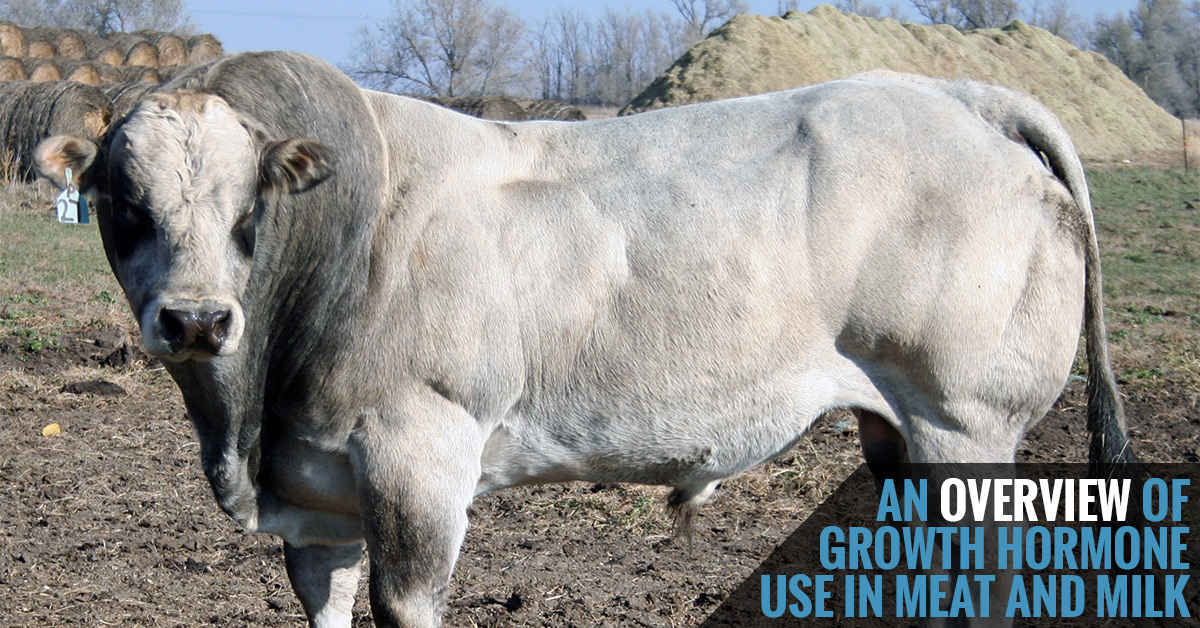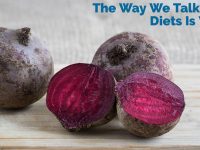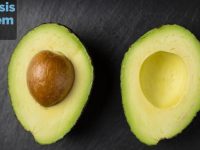Growth hormones are a divisive topic. A major selling point of organic and “natural” brands are hormone-free meats, which raises concern for some about why any animals are treated with hormones. Combine this branding magic with an often poor understanding of labeling laws and biochemistry and you have the recipe for mass misinformation.
In truth, the idea of accidentally dosing ourselves with anabolic agents is a little scary, and it’s understandable why some would shy away from hormone-treated meat. When examined under the light of legality and science, however, we can reassure ourselves that we will not in fact develop acromegaly as Andre the Giant did—indeed, we can understand how impossible this is!—and worry less at least about this aspect of meat production.
In this article, I’ll explore the scientific (and legal) reality of growth hormone use in animals and how it pertains to human safety. By the end, you should have a clear understanding of what is allowed, what is not, and how any of it might affect your health.
A Quick Note Before We Begin…
Throughout this article, I will refer to various animals or meats as “hormone-free”. When I say this, I mean free of exogenous (or outside) hormones. All animals produce hormones endogenously (within themselves), and animals raised for meat are no different. Therefore, no meat is technically hormone-free, but some are free of injected or subdermally implanted hormones—and those are the ones I am writing about.
Growth Hormones in Poultry
Despite suggestive package claims on natural or organic chicken, no poultry in the United States (or more than likely, the entire world) are given growth hormones. That’s right: 100% of poultry is 100% hormone-free.
There are a few reasons why chickens (and other forms of poultry) aren’t given hormones, not least of which is because it’s illegal. Even were it legal to administer hormones to poultry, however, it would still be an uncommon (or even unheard of) because…
- Hormones must be injected to have any effect—feed-based hormones are poorly absorbed—which is harder and costlier to do with chicken-sized animals; and
- [Injected] growth hormones do not appear to cause poultry to gain lean muscle, but rather only change where fat is deposited.
Poultry is marketed as a “lean meat”, so changing the fat content without actually inducing further muscle growth serves no purpose and is even contrary to a poultry producer’s goal. Considering further that the purchase and application of all those hormones would be challenging, costly, and illegal, you can be assured your poultry is all hormone-free.
At a Glance…
- No poultry sold in the US—or likely the world—is treated with growth hormones.
Growth Hormones in Pork
As with poultry, all US-produced pork is hormone-free; in fact, there is no hormone approved by the FDA for use in swine. Unlike with poultry, however, hormones do have a measurable effect in pigs, and several companies have petitioned the FDA through the years for approval of porcine somatotropin (pig growth hormone)—but all have ultimately withdrawn their applications. Thus, for the time being, pigs are hormone-free.
It should be noted, though, that some pigs are fed a different, non-hormonal growth promoter known as ractopamine. Ractopamine is a beta-agonist that promotes growth in a similar way to porcine somatotropin but can be administered via feed instead of injection, which makes it easier and less costly to use. Since ractopamine survives digestion, some worry it could cause harmful effects in humans—but this has never been documented, and independent testing has shown that in practice ractopamine residues are rare (only found in 20% of pork samples) and well below levels considered safe by the FDA when present (found at less than 5 parts per billion; compare to the FDA’s tolerance of 50 parts per billion).
There is a small amount of controversy over the use of ractopamine stemming from its ban in certain areas (notably the European Union); I’ll do what I can to clarify the contention. According to some reports, a major rationale for the EU banning ractopamine is its similarity to another drug known as clenbuterol—in the 90s, several European countries had small outbreaks of illness traced back to meat contaminated with clenbuterol (no deaths), and as a result all drugs similar were banned.
From a public policy standpoint, this all-inclusive ban may have made sense, but pharmacologically it did not. While clenbuterol and ractopamine both are beta-agonists, they have very different pharmacokinetics—specifically, ractopamine has a plasma half-life estimated to be an average of 4-7 hours whereas clenbuterol’s half-life is 36-39 hours. What this means practically is that there is much more risk of clenbuterol bioaccumulating in the meat to an unsafe level for humans and thus a far greater potential for contamination, and also that the risk of contamination with ractopamine is much lower due to its rapid clearance from the body.
To date, there has never been a single incident related to ractopamine-contaminated meat. As mentioned earlier, only a low percent of meat tests positive for the drug, and always at levels significantly below the safety threshold; with this in mind, there appears to be no reason for concern from the aspect of human safety.
Regardless, ractopamine is neither a hormone nor an antibiotic, and therefore can legally be used by 100% of pork producers in the United States, including organic producers. While the USDA did recently approve a new label for ractopamine-free products, there is currently no way to know for sure whether your pork has been administered ractopamine—but again, safety-wise there is no concern.
At a Glance…
- No pork sold in the US is treated with growth hormones.
- 20% of pork tests positive for ractopamine (a growth promoter), but always at less than 10% the (already robust) safety threshold.
- There has never been an incident related to ractopamine-contaminated pork.
Growth Hormones in Beef
Beef is the only large-scale commercial meat that allows the use of growth hormones, including bovine somatotropin (the notorious rBST, which you might be familiar with via milk labels), estrogen, and progesterone—there are a few others, but they are only used in cattle not intended for human consumption, such as heifers, and so I will not cover them here. Bovine somatotropin is a protein-based hormone, while estrogen and progesterone are steroid hormones and therefore lipid-based.
There is concern, particularly with the steroid hormones, that meat from treated cattle could contain higher-than-normal levels of these hormones—and indeed this is the case! However, it’s important to put these increased levels into context, which is that…
- Beef only contributes an estimated 8% of total ingested estrogens (or estrogenic compounds) from food, and 0.5% of total progesterone.
- After considering the low bioavailability of ingested hormones (the primary reason farmers inject them rather than put them in feed) and our own endogenous hormonal production, beef only contributes 1/4,000 of a percentage point to our estrogen pool, 1/2,000 of a percent to our progesterone pool, and 1/33,333 a percent to our testosterone pool.
These are beyond minuscule amounts. Basically, for every nanogram of estrogen you derive from beef, you produce tens to hundreds of thousands of nanograms yourself. In short, from the standpoint of human health, there is zero risk. (And, for what it’s worth, the amount of these hormones in treated beef is only marginally higher than the levels from untreated beef, so the argument that hormone-treated beef is dangerous is rendered even more ridiculous.).
As for bovine somatotropin, I’ll cover that separately next.
At a Glance…
- Beef and milk cattle are commonly treated with bovine somatotropin (rBST), estrogen, and progesterone.
- Estrogen and progesterone are poorly absorbed and at best account for…
- 0.00025% of total estrogen (in men; for women, much less)
- 0.00048% of total progesterone
- 0.00003% of total testosterone
- Bovine somatotropin is a protein-based hormone that will be broken down fully by our digestive system (see the next section for more info).
What About Bovine Somatotropin (rBST)?
I’ve put bovine somatotopin in its own category because all somatotopins are protein-based hormones and can thus be explained in the context of digestion. Also, while ruminants (like beef and buffalo) are currently the only animals to be administered with somatotropin, there is the possibility that pork could be one day, and it makes more sense to cover all somatotropin subtypes as a whole rather than individually on an animal-to-animal basis.
Biochemically, somatotropins are proteins. When injected directly into the body, where there are no general protein-degrading enzymes, they can have a powerful effect. When consumed orally, however, they have zero effect due to our body’s digestive system, which is designed to break apart proteins we eat with proteolytic enzymes. This is why farmers and ethically dubious athletes alike inject the hormones rather than eat them—it’s not because needles and subdermal implants are easier (or more fun!), it’s because it’s the only effective method.
Furthermore, while all somatotropins are similar in structure, they do have differences. Ruminants are administered bovine somatotropin; swine are administered porcine somatotropin (or would be); poultry are administered avian somatotropin (or would be); humans are administered simply “somatotropin”, which could easily be called human somatotropin and is called “human growth hormone” (as opposed to cow growth hormone, etc.). While each subclass of growth hormone works as intended in their respective species, they have no effect when given to other species because they cannot bind to the proper receptors.
Thus, there really shouldn’t be any human health controversy over the use of somatotropins in animals as they are:
- Broken down and rendered inactive by the digestive tract.
- Incapable of binding to human growth hormone receptors.
Insulin-like Growth Factor 1 and rBST-Treated Milk
A related factor to bovine somatotopin (rBST, as it is commonly called on milk labels and will be from here on out) is that it increases the content of insulin-like growth factor 1 (IGF-1) in milk, and that in a larger context milk causes an increase in human levels of IGF-1. There are actually several ideas here that are only tangentially related.
First, it’s not surprising that rBST causes increases in IGF-1 in milk as a known effect of growth hormones across species is an increase in the production of IGF-1. Hormones don’t work in isolation, but in groups, and growth hormones (like rBST) increase the production of other growth-related hormones (like IGF-1) as part of their effect. Thus, any cow treated with rBST will naturally produce more IGF-1, also increasing the level of IGF-1 in their milk.
It should be noted, however, that IGF-1 is a protein-based hormone like rBST, and will be broken down by our digestive tract. There is no evidence that IGF-1 (or any protein-based hormone) is capable of being absorbed intact, so it’s unlikely elevated levels of IGF-1 are causing the small increase of IGF-1 in humans who drink milk.
A much more likely cause is the simple relationship between dietary protein intake and IGF-1. Milk is a rich source of protein, and people who drink milk are likely to display a small increase in plasma IGF-1. But, the same is true for those who consume soymilk (also high in protein), meat, legumes, or any other protein-rich food. The amount of IGF-1 actually present in that food isn’t important; only the protein content is.
There’s a whole controversy about IGF-1 and its effects on humans and human longevity, but it’s far too complicated to get into here. For the moment, it suffices to say that moderate amounts of protein (including the level I recommend) are not contended, and that it doesn’t really matter what your source of protein is (so long as it’s high-quality)—they’ll all cause an increase in IGF-1 levels.
What About Animal Welfare?
The relationship between growth hormone (and ractopamine) use and animal welfare is complicated. There is some evidence that the use of growth hormones (or growth promoters like ractopamine) could decrease animal welfare; however, there is also evidence that these decreases in welfare can and often are compensated for with small adjustments in the production process. In this way, animal welfare becomes a producer-centric issue—which is really what it is in all circumstances. There are more and less humane ways to raise animals, but the administration of growth hormones isn’t necessarily an indicator of humanity.
On the other hand, since growth hormones increase the net yield per animal, fewer animals must be raised. If we were to continue consuming as much meat as we currently do in the US, we would need to raise and slaughter hundreds of thousands more cattle alone yearly to meet the demands without growth hormones. Viewed from this angle, the use of growth hormones could be argued to ultimately save suffering.
As I said, this is a complicated issue; I don’t mean to fully explore it here, nor am I necessarily the best person to do the job. All I intend is to highlight both the potential downsides and upsides to hormone use because it’s definitely not a single-sided issue. At the very least, if animal welfare and reducing animal suffering are your chief concerns, you’re better off limiting your meat intake (such as by eschewing meat at least one day a week) rather than avoiding hormone-treated meat, as the effects of the former are not debatable while the effects of the latter are.
Growth Hormones Are Nothing to Worry About
Growth hormones are both less universal than certain producers would have you believe and also safer. Scientifically speaking, meat from animals treated with growth hormones cannot affect your own hormonal profile; legally speaking, many types of meat—specifically, all poultry and pork—cannot ever be treated with growth hormones.
If there’s one thing to remember from this article, it’s this: the hormones animals are treated with must be injected to be effective. If they were effective when fed to animals, farmers would simply add them to feed. Since they are ineffective when consumed, however, they cannot affect our physiology.
There is also the issue of ractopamine, a non-hormonal growth-promoter—but even here, where there is scientific plausibility because it can be absorbed via the digestive track, the risks are much lower than any scaremonger would have you believe. Ractopamine is rapidly metabolized and excreted, making bioaccumulation difficult and the danger of contamination almost non-existent.
If the only reason you purchase organic or natural meat is the risk of exposure to hormones, then you need not worry. The advertisements of “hormone-free” seen on labels are there for marketing purposes, the same as the benefit claims on supplements that are closely followed by the FDA warning that none of it has been reviewed for evidence. Marketers do a great job of separating themselves from the pack by making such claims, but it doesn’t mean those claims are based on solid science—because they’re not.















I would love to see an article about antibiotic use in meat and another article about the ketogenic diet.
So well written, thanks for the advice!
So the solid fact that in areas where people consume very few dairy products (such as rural East Asia) they have far lower cancer rates, unless those people move to an area where they consume more dairy when their cancer rates rocket up – obviously just sheer total coincidence.
Though as Western dairy products contains different proteins to the original African varieties it could be just be western dairy product full stop, rather than all the stuff they are injecting them with.
Whichever, I think I prefer the 1/3 to 1/8 chance of cancers that a cattle free diet gives.
There are so many confounding factors to sort out when we try to correlate a single food to disease incidence, especially across countries, that these sorts of observations are all but worthless. Also, I’m not sure what your references are; I would be curious to see what studies you’ve encountered that demonstrate cancer rates to “rocket up” in the situation you describe.
Interesting article. I understand your lack of concern over sentient animals being assaulted with added hormones.
But clearly I disagree. The added hormones have an effect on the animals and humans who eat them. And all
animal products contain hormones that humans are unnecessarily consuming. So many condemn soy because
it contains PHYTO estrogens. But those plant hormones are ER-Beta, and the ones in animals (plus in Hops and some
other plants) are ER-Alpha and STIMULATE and encourage growth, including cancer cells. The unnatural early puberty in millions of children in the world seems directly related to the animal hormones they are consuming, more than for fat consumption and perhaps being overweight. Yet those who consume animals avoid linking early puberty to those hormones.
Those ingested animal hormones are messing up both human children as well as adults. And the more saturated fat humans
consume , increases our hormones as well. Peace.
I am not unconcerned with the plight of sentient animals, as you suggest, and indicate as such in the article. But, the topic of the article isn’t the ethics of injecting animals with hormones or consuming meat or animal products in general—it’s the science of how hormones in meat and animal products affect (or do not affect) humans. The evidence suggests they do not have a significant effect on human health, but if you have peer-reviewed sources that rebut this then I’ll be happy to update the article.
What a bizarre article! I did not realize that the main concern of using synthetic drugs to enhance meat production was simply that we would absorb those hormones. Silly me. I thought the main concerns were nutrition and ethics. Manipulating hormone cycles absolutely and unquestionably alters the composition of the body. Why else would anyone use it? What would be the point if it didn’t? And that in turn affects the nutritional quality of the meat. It is cruel and harmful to the animal and the consumer. No one benefits except Monsanto et al. Honestly, I thought you were doing well until I read this grand mistake of an essay which has destroyed your credibility in my eyes. These same drugs you espouse in our meat supply are illegal in humans because of their unsafe side effects. Yet in spite of lack of safety data, you are eager to jump right on to that bandwagon without a moment’s hesitation. What happened to the scepticism you expressed about collagen supplements? Are those manufacturers not paying you enough? Red meat raised without artificial drugs, feed and confinement are actually quite healthy. Their nutritional profile is more similar to wild salmon than your factory cattle.